1788 words
Parent: T.00_ED_TEXTUAL HOLOGRAM: PRESENTATION
LOOSE COEXISTENCE
Source: Elie During, “Art, Science, and the Nexus”, in The Art of the Real: Visual Studies and New Materialisms, R. Rothman & I. Verstegen.
Short of embracing Badiou’s radical alternative to classical metaphysics, I believe there is room for a variety of intermediate positions that the allied powers of art and science will help us to better apprehend. The basic intuition is rather straightforward: coexistence and togetherness come in many forms; things can hang together loosely. It is once again William James who wrote: “What pluralists say is that a universe really connected loosely, after the pattern of our daily experience, is possible, and that for certain reasons it is the hypothesis to be preferred” (76). What is distinctive about this coexistence of the “loose” kind? What does it mean for things to hang together “loosely”? And more importantly, how should we come to terms with the apparent contradiction involved in binding the conjunctive power of connections—Whitehead would later speak of “prehensions”—and the disjunctive state resulting from a diversity of distinct, local perspectives on the world?
The point is that there are several ways for things to be separated from each other. The most obvious cases, those that come more readily to mind, involve spatial separation: the experience of absence as distance or remoteness in space. Such is my relation to a remote part of the universe (Andromeda), or a remote part of the planet: the Tigers in India, to refer to William James’ famous paradigm of “ambulatory” thought. Tigers in India, or Peshmergas in Syria, is a clear instance of an absent experience to which I am nonetheless connected through a smooth series of intermediaries supplied by the world and its various “media.” Separation in time is often conceived in very much this way: such are events pictured in a distant past or future… But the kind of separation that arises from causal disconnection is quite different. There are locations or regions in the overall nexus of the world that are so remote from each other that they hardly interact at all. One may view them as insulated from each other as far as active connections are concerned. Think of a tribe preserved from all contact with civilization, somewhere in the deep forests of New Guinea— at any rate, such an example was available in James’ time. Think of a black hole cut from the surrounding space by the barrier or horizon that prevents any radiation from crossing a certain threshold. Or think about the limits and thresholds imposed upon the exchange of information by current communication technologies. In The Nature of the Physical World, Arthur Eddington aptly reminds us that relativistic effects need only concern us below a certain spatiotemporal threshold—one that allows two events to be connected and to interact causally through some physical signal, such as an electromagnetic wave. “At the greatest possible separation on the earth the thickness of the neutral wedge is no more than a tenth of a second; so that terrestrial synchronism is not seriously interfered with” (49). “Suppose,” Eddington continues, “that you are in love with a lady on Neptune and that she returns the sentiment. It will be some consolation for the melancholy separation if you can say to yourself at some—possibly prearranged—moment: ‘She is thinking of me now.’ Unfortunately a difficulty has arisen because we have had to abolish Now. There is no absolute Now, but only the various relative Nows differing according to the reckoning of different observers and covering the whole neutral wedge which at the distance of Neptune is about eight hours thick. She will have to think of you continuously for eight hours on end in order to circumvent the ambiguity of Now” (The Nature of the Physical World, p. 49).
One may protest that this is true only of certain limit cases involving very high velocities neighboring the speed of light. The point, however, is that such effects, although negligible when one considers speeds and distances commensurate with the usual scope of human action, always exist in principle. So they cannot be entirely disregarded if one is concerned with making sense of the general scheme of things—the way they hang together. Moreover, there are a host of situations where those effects become more sensible: these situations arise whenever the transmission of information—digital or otherwise—across space is achieved through the exchange of electromagnetic signals, with the inevitable desynchronization of flows, time delays, and ensuing blind-spots. Think, for example, of the slight but very perceptible difference between numerical TV and ordinary Hertzian TV during the live broadcast of a soccer game, the confusion that results from the same information being transmitted with a few seconds delay in two distinct but neighboring locations (with the ensuing interplay of anticipation and frustration)…
I could go on and on: my point is that there are a wealth of empirical situations where the issue of (causal) disconnection rises to the fore, drawing our attention to the fact that togetherness cannot be considered apart from the various modes of disconnectedness embedded in the fabric of physical and human reality. James must be celebrated for having raised the general issue. But I believe it is Whitehead’s merit to have suggested a general scheme for weaving together interconnectedness and disconnectedness in a vision of cosmic solidarity that makes room for the chunky, and at times discrete nature of experience. Time itself, James said, comes in “drops.” Whitehead also embraces the notion of a discrete, “epochal” time, and he does so not on phenomenological grounds but from an ontological perspective, because he acknowledges the essential separateness of “actual occasions” (the basic ingredients of every event or process) within the general “advance of nature.” Eschewing totality altogether, speaking of unity without totality, can only be a verbal solution in that respect. We must seek a concrete understanding of the paradoxical nature of the nexus by unpacking the manifold meaning of togetherness. Contemporaneity (being together in time) is but one among many possibilities: it does not necessarily presuppose an absolute notion of the cosmic present, since becoming can be viewed as a bundle of simultaneous unfoldings without any reference to a sharp-edged, instantaneous “now.” Again, there is a plurality of modes of disconnection or separation within togetherness. In order to avoid the temptation of retotalizing the nexus under one single overarching scheme—be it the “extensive continuum,” narrowly interpreted as the spatio-temporal structure underlying a particular physical theory, or God’s (or the quantum particle’s) presence and action upon the world beyond the strictures of locality—, the first task is to understand how togetherness welcomes various forms of the negative: disconnectedness, separation, temporal indetermination, etc. Granted, being part of the same whole is not entirely innocuous. It implies that things hold together at a metaphysically level. As Whitehead explains in Science and the Modern World, “in a certain sense, everything is everywhere at all times”. This startling statement is directly related to the cosmological notion of perspective, which implies that “every location involves an aspect of itself in every other location”. Thus, nature in some sense “conspires” with every actual occasion”. And yet the nexus is no plenum. This is what separates Whitehead’s and Leibniz’ cosmologies. There is no cosmic medium, or at least it does not come in one piece. The bonds of mutual immanence that make up the nexus are in fact hollowed out through and through: there are holes, gaps, and blindspots, insulated regions, things “loosely” connected across space and time… In order to reach a relativized, differentiated and pluralistic understanding of togetherness or coexistence, it is necessary to make room for causal disconnection within the causal nexus. This is illustrated—but no more than illustrated—by the relativistic effects discussed above. The fact is that, at every level, similar schemes of disconnection are at play, interlocking with the interconnectedness of things. In order for genuine connection to obtain anywhere, there must be real disconnection somewhere. This is the main lesson behind Whitehead’s concept of the thick present: “contemporaneity,” as distinct from Einstein’s narrow, instant-based “simultaneity”.
To sum up, connectedness and disconnectedness always work together. James similarly observed that we are not forced to choose, as the idealist wants us to believe, between absolute independence and absolute mutual dependence: “Either absolute independence or absolute mutual dependence—this, then, is the only alternative allowed by these thinkers. Of course ‘independence,’ if absolute, would be preposterous, so the only conclusion allowable is that, […] ‘every single event is ultimately related to every other, and determined by the whole to which it belongs.’ The whole complete block-universe through-and-through, therefore, or no universe at all! […] What pluralists say is that a universe really connected loosely, after the pattern of our daily experience, is possible, and that for certain reasons it is the hypothesis to be preferred.” (A Pluralistic Universe, p. 76)
When it comes to making sense of the whole of experience, empiricism is always confronted with a dilemma: it must account for the fact that nothing is by essence radically subtracted from the plane of experience, or cut from the extensive becoming of nature, while allowing for every possible degree of disjunction or disconnectedness within togetherness. This difficulty reflects a more general tension between monism and pluralism, solidarity and locality—a tension that is still apparent in Whitehead’s particular brand of empiricism. Such a tension is in a way inevitable, it cannot be resolved by resorting to a universal scheme of togetherness that would achieve totalization once and for all. For as James put it: “Things are ‘with’ one another in many ways, but nothing includes everything, or dominates over everything” (A Pluralistic Universe, p. 321). In that respect, there is indeed an essential inexhaustibility or incompleteness of the whole. As we saw earlier, the very notion of perspective (or situs) seems to prevent the plurality of perspectives from being integrated within a totalizing perspective. A perspective always lends itself to other perspectives; there cannot be a total perspective, any more than there is experience in general. As a result, coexistence is thoroughly pluralized: it turns out to be a multilayered, multimodal concept. In Whitehead’s system, its meanings range from simultaneity in the mode of “presentational immediacy” to contemporaneity understood as causal independence, through the concepts of “cogredience” and “co-presence” associated to the possibility of shared motion. Each of these notions spells out in its own way a definite mode of togetherness within universal becoming. Yet, to repeat, pluralizing the object of metaphysical inquiry does not amount to giving it up altogether.
Links
︎ egs.edu/biography/elie-during ︎ parisnanterre.fr/m-elie-during--697698.kjsp
From the same writer
T.00_ED_TEXTUAL HOLOGRAM: PRESENTATION T.01_ED_FOLDS AND PIXELS T.02_ED_DIGITAL SUBLIME T.03_ED_MATHEMATICAL SUBLIME T.04_ED_IMMANENT SUBLIME T.05_ED_NEXUS T.06_ED_KINKED CLASSICISM T.07_ED_LOOSE COEXISTENCE T.08_ED_FLOATING TIME T.09_ED_FLOATING SPACE T.10_ED_RETRO-FUTURES T.11_ED_EXITING VIRTUAL REALITY T.12_ED_BULLET TIME T.13_ED_GHOST TIME T.14_ED_SUBLIMINAL TIME T.15_ED_DIAGRAMS OF COEXISTENCE T.16_ED_VOLUME-IMAGE T.17_ED_VERTICAL TIME T.18_ED_TURNING MOVEMENTS T.19_ED_SUPERTIME T.20_ED_PROTOTYPE T.21_ED_ZERO-G ARCHITECTURE T.22_ED_SHOCK SPACE T.23_ED_TRANSPARENCY






